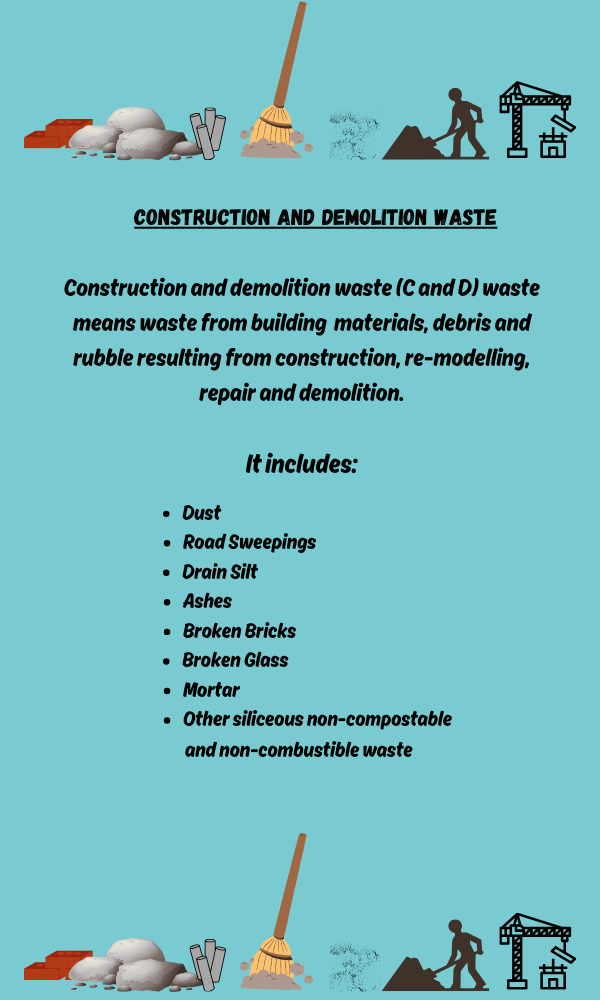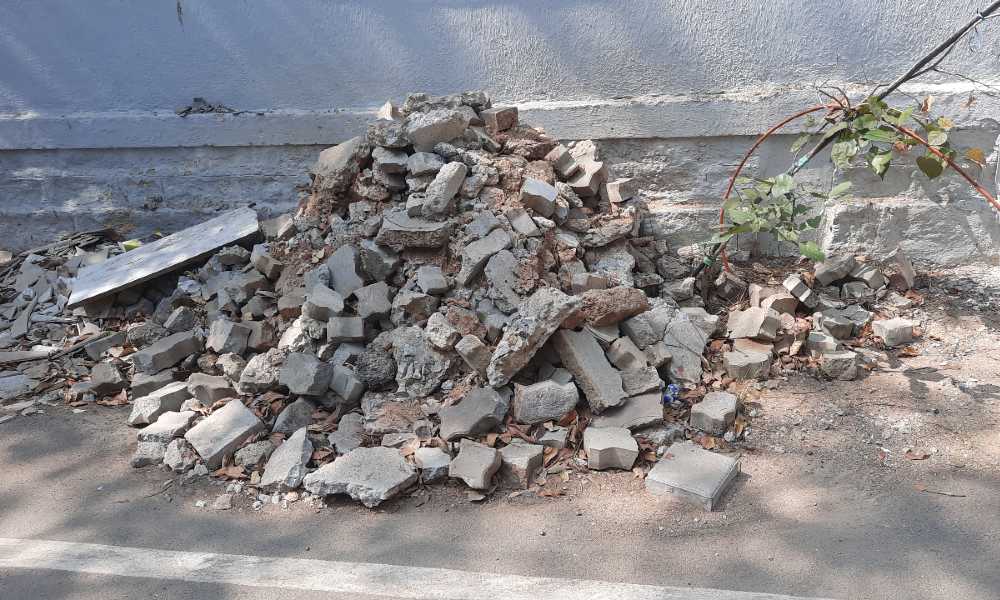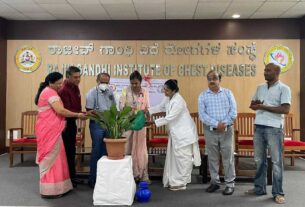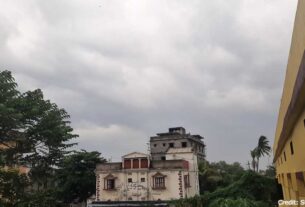Experts suggest that the construction and demolition (C and D) waste should be segregated at source and reused to manufacture construction material.
Construction and demolition (C and D) waste has taken over footpaths in the city, forcing pedestrians to step on to the roads. Several places across the city have been filled with C and D waste like cement dust, hollow bricks, gravel and other debris.
Hema, a resident of Ayyappa Nagar, K.R. Puram, said that the road to her home is filled with C and D waste. “It is difficult to walk through the road. There are cement bricks and gravel everywhere. My eyes get filled with dust as soon as I use the road,” she added.
A construction worker who works in a site near Hulimavu said that they are instructed to dispose of the C and D waste in open areas, after trying to sell it. “The remains of construction materials will be given to dealers who would buy them for a cheaper rate. We will also give them to anybody who would ask them for small works. If there is any waste left, we will dispose of it on empty roads, lakes or near garbage dumps,” he said.
According to Bruhat Bengaluru Mahanagara Palike (BBMP) guidelines, generators of small amounts of C and D waste during minor repair or renovation must store the waste at their premises and contact BBMP authorized collectors for removal. Other bulk waste generating activities like construction, dismantling, repair or renovation need prior approval from BBMP.
According to the BBMP website, the waste generators should contact the BBMP officials and pay the prescribed amount notified by BBMP. After the payment, waste is transferred to authorized processing centres. C and D waste is collected only upon special requests.
Chief Engineer, Solid Waste Management (SWM) department, BBMP, said that most builders have taken approval from BBMP for construction and demolition works. “The C and D waste generated during the renovation of small buildings is an issue. The BBMP marshals collect fines from those who dispose of C and D wastes illegally,” he added. Bengaluru Solid Waste Management Limited (BSWML), deals with waste management, he said. More than Rs. 17 lakhs have been collected from over 500 people between Sep. 2019 and Dec. 2023.

Nagesh, Nodal Officer, SWM, BSWML, said that they operate under the Guidelines on Environmental Management of Construction and Demolition Wastes, 2016. “We have established two C and D waste processing plants according to the Act. The waste sent to these plants is recycled for other purposes,” he said. “The marshals also collect a penalty of Rs. 10,000 per tonne from those who dispose of C and D waste illegally,” he added.
Dr. Shikha Verma, Assistant Professor, R. V. College of Architecture, Bengaluru, said that most C and D waste can be recycled to use in the manufacturing of construction material. “But disposing of C and D waste in open areas may lead to choking and clogging of drains,” she added. The leachate may cause soil and water pollution and affect the flora and fauna. The dust can also cause air pollution, she said.
Shrotik Bose, an expert in solid waste management, said, “Other than visual cleanliness, illicit dumping of C and D waste is a major source of soil and water pollution. It’s a major contributor to Particulate Matter (PM) 2.5 and 10 causing air pollution.”
He added, “The right way is to segregate different types of waste at source and send it to the right processing destinations. But it’s easier said than done and comes with tons of challenges.”
Rakhi Anil, Program Manager at Saahas, a non-profit organization working in the field of waste management, suggested that the C and D waste management sector should be formalized. “C and D waste management is a resource intensive process. So, the local authorities should establish waste aggregation centres for each zone. Once this accumulates to a certain volume, they can shift it to the waste processing plants,” she added.



